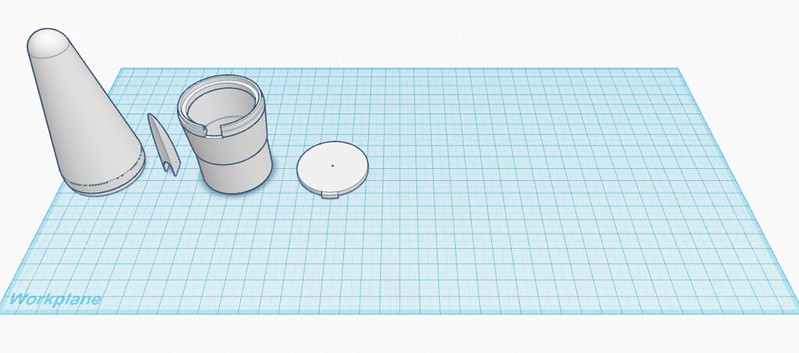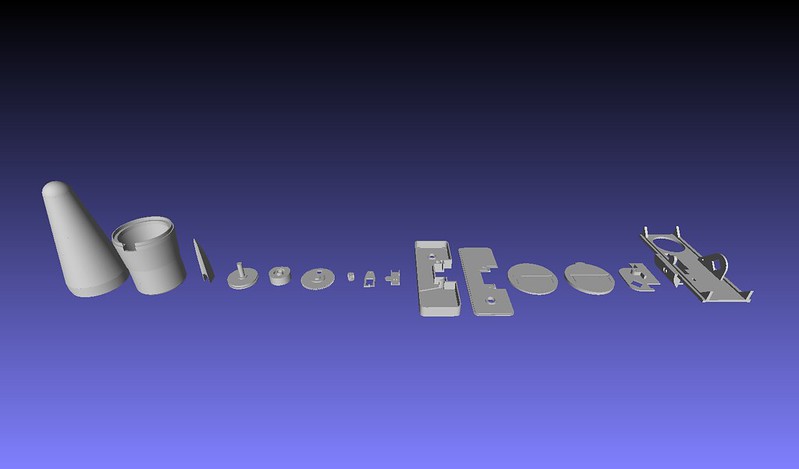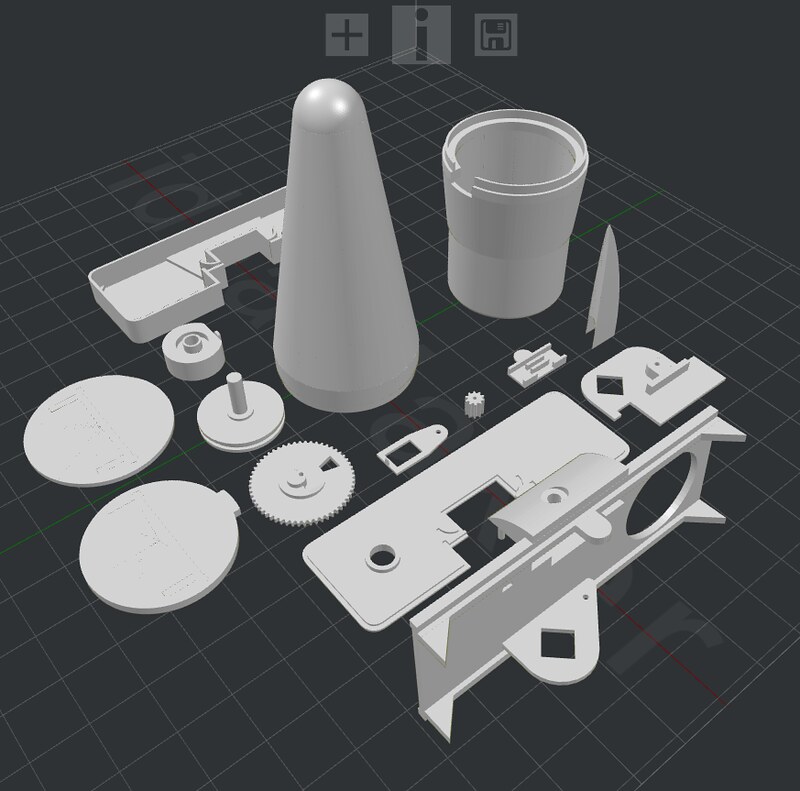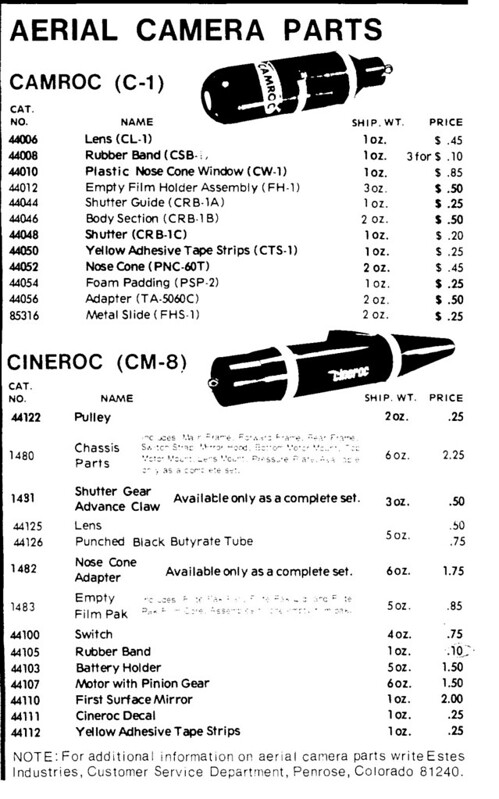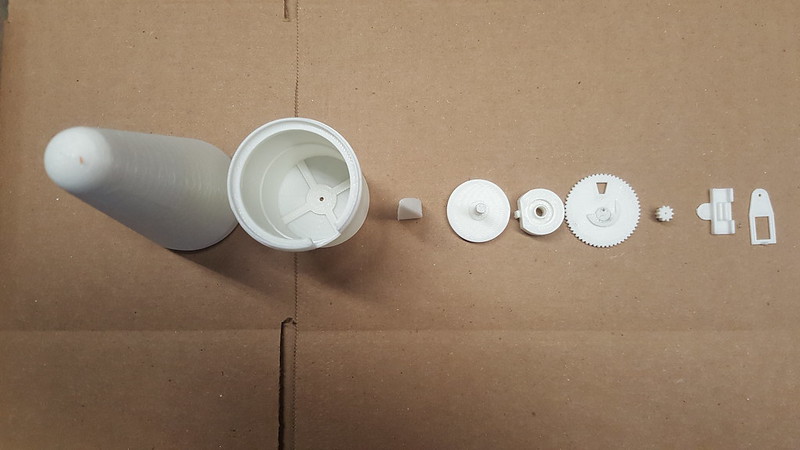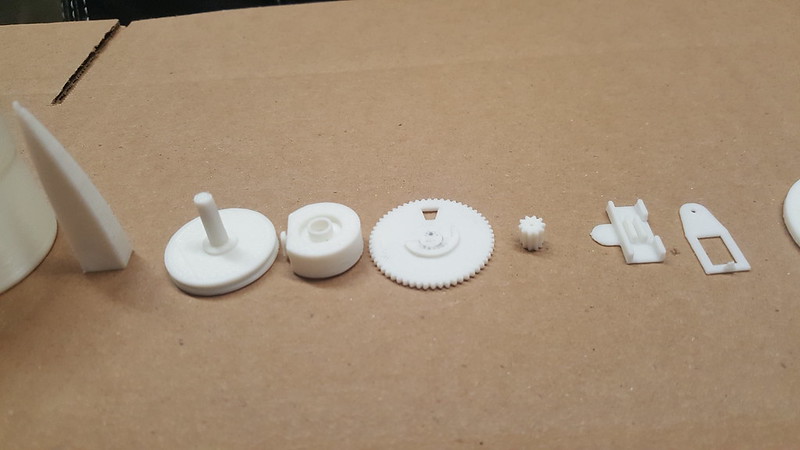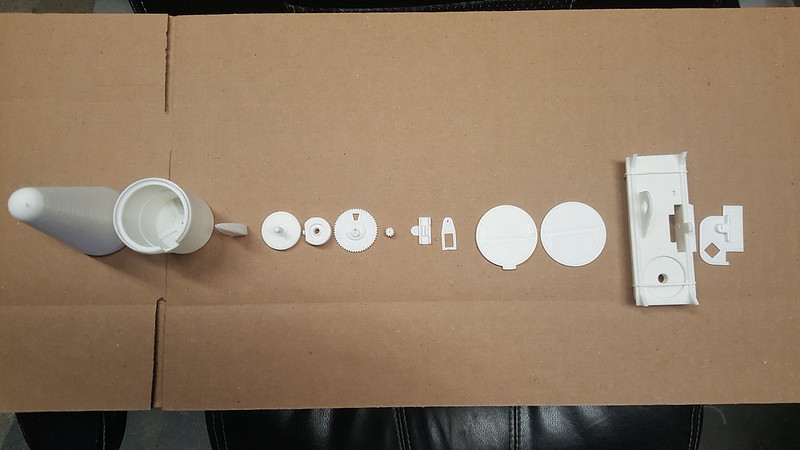- Joined
- Mar 27, 2013
- Messages
- 22,535
- Reaction score
- 14,942
Finally... News about this project.
A recap... Many of Doug's students graduated, Doug changed jobs, and while getting a better job, he lost access to the equipment his team was using for the project. Doug is also trying to get his Masters Degree, and time for the project is very limited. Me, I graduated, and moved to China. My job turned out to be a dud, and I've changed jobs to one that pays SALARY!!! So, even if we get snowed out, or a class cancels due holidays, or the kids taking tests at their public schools, I will get a reliable paycheck (almost 6 times larger than my smallest paycheck at the old job (about $209 USD for the MONTH of July).
We are now working with Alex and Sheree Boyce of Boyce Aerospace Hobbies. BAH already offers a 3D printed simulated Cineroc for about $25 USD. However, those aren't compatible with the original's parts. They'll be getting the files that Doug and his team worked on, as well as authentic samples that I've managed to pull together, to help them with the project. I've also reached out to Tango Papa about the decals again. Hopefully, this will be the last push before the project is finished. The resulting files will be made available for anyone to make for themselves, or they can buy a printed copy from BAH (and get decals from Tango Papa).
I'm hoping that the parts that are created can be used to repair damaged original Cinerocs (such as aft transitions), replace missing parts (pressure plates, pulleys, film cartridges, nosecones, etc.), or as a foundation for a completely arrangement for a new digital video camera. I'm also hoping that a 3D printed working film camera might also be created. I've also proposed a reduced risk of breakage variation of the aft transition that may help prevent the kind of damage that put so many Cinerocs out of service... by putting the eyebolt into a "well" to reduce its profile. It won't be canon, but it beats parts breaking.
Keep your fingers crossed!
Oh, and I managed to get a copy of the balsa nosecone version of the K-52P delivered to Doug. He's going to scan them for me, and then those will be added to the other sets of instructions.
A recap... Many of Doug's students graduated, Doug changed jobs, and while getting a better job, he lost access to the equipment his team was using for the project. Doug is also trying to get his Masters Degree, and time for the project is very limited. Me, I graduated, and moved to China. My job turned out to be a dud, and I've changed jobs to one that pays SALARY!!! So, even if we get snowed out, or a class cancels due holidays, or the kids taking tests at their public schools, I will get a reliable paycheck (almost 6 times larger than my smallest paycheck at the old job (about $209 USD for the MONTH of July).
We are now working with Alex and Sheree Boyce of Boyce Aerospace Hobbies. BAH already offers a 3D printed simulated Cineroc for about $25 USD. However, those aren't compatible with the original's parts. They'll be getting the files that Doug and his team worked on, as well as authentic samples that I've managed to pull together, to help them with the project. I've also reached out to Tango Papa about the decals again. Hopefully, this will be the last push before the project is finished. The resulting files will be made available for anyone to make for themselves, or they can buy a printed copy from BAH (and get decals from Tango Papa).
I'm hoping that the parts that are created can be used to repair damaged original Cinerocs (such as aft transitions), replace missing parts (pressure plates, pulleys, film cartridges, nosecones, etc.), or as a foundation for a completely arrangement for a new digital video camera. I'm also hoping that a 3D printed working film camera might also be created. I've also proposed a reduced risk of breakage variation of the aft transition that may help prevent the kind of damage that put so many Cinerocs out of service... by putting the eyebolt into a "well" to reduce its profile. It won't be canon, but it beats parts breaking.
Keep your fingers crossed!
Oh, and I managed to get a copy of the balsa nosecone version of the K-52P delivered to Doug. He's going to scan them for me, and then those will be added to the other sets of instructions.
Last edited:





